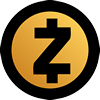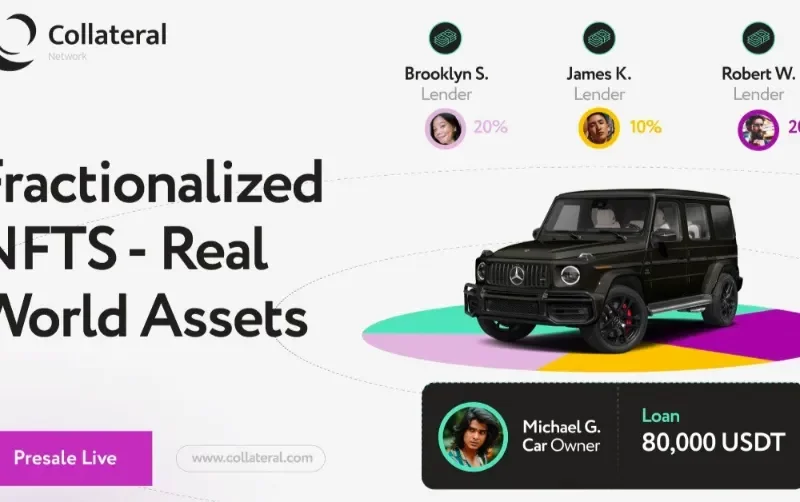Bitcoin (BTC) is the cryptocurrency industry’s first asset. BTC has a maximum supply of 21 million coins, a notable point of focus when discussing BTC value. Satoshi Nakamoto, a pseudonymous person or group, published the Bitcoin white paper in 2008, laying out BTC’s concept. In 2009, Bitcoin’s first block called its genesis block, went live and brought BTC officially into existence as an asset. Nakamoto ceased communication in Bitcoin’s early years, and his real identity remains a mystery.
Bitcoin (BTC) Price
What Is Bitcoin (BTC)?
1. Who Controls Bitcoin (BTC)?
By definition, decentralize means “ to move the control of an organization or government from a single place to several smaller ones.”
The same goes for the Bitcoin network, except instead of “several smaller places,” the control of the system is delegated to thousands of nodes – people who choose to run the Bitcoin software on their computers.
No central authority makes decisions in regards to the Bitcoin network; instead, everyone gets to call the shots. No one owns Bitcoin technology, so there is no hidden mastermind who controls Bitcoin.
2. Who Created Bitcoin (BTC)?
Satoshi Nakamoto is the anonymous name used by the creator(s) of the cryptocurrency Bitcoin. Although the name Satoshi Nakamoto is often synonymous with Bitcoin, the actual person that the name represents has never been verified.
Many people to believe that it is a pseudonym for a person with a different identity or a group of people. Learn more about this legendary and anonymous developer.
3. Bitcoin (BTC) Pros and Cons
Bitcoin (BTC) Pros:
- Accessibility and Liquidity
- User Anonymity and Transparency
- Independence From Central Authority
- High Return Potential
- Crypto trades around the Clock
Bitcoin (BTC) Cons:
- Volatility
- No Government Regulations
- Irreversible
- Limited Use
- Serious Scalability Issues
- Vulnerable to Security Risks
4. The Difference Between Bitcoin (BTC) and Traditional Currencies
The main difference between them is, the traditional currency is a centralized system and bitcoins are decentralized one and peer-peer systems. Hence there are no central authorities to regulate rules and regulations on a bitcoin transaction. But a traditional currency is strictly regulated by the governmental authorities. Both the bitcoins and fiat currency have values which can be used for buying and selling of goods in the market.
- Flexibility
With traditional currency functioning for five days a week and die to transaction restriction, there is a chance of freezing of currency. There is no limit in the number of currencies, being printed, and hence when there is inadequate currency, it will affect the buyers and sellers, resulting in inflation.
- No Fraudulent Activity
If you want to transact with a traditional currency system, the users have to provide personal details like name, address, phone number, and lots more. So, with the internet technology, the malicious user will be able to hack the account details of the traditional currency system easily. Traditional currency can suffer from double-spending, where the same money is used for more than one transaction.
- Reduced Cost
In a traditional banking system, for making a national transaction, it will take 2-3 working days, and the transaction fees will be high. In the case of international transactions, the transaction fee will be very higher, and it will take 15 days to complete the transaction. In a Cryptocurrency system like bitcoins, there is no transaction fee for making a national transaction. The transaction will also take place in seconds or within 24 hours.
5. Is It Safe To Use Bitcoin (BTC)?
Bitcoin technology is mostly safe because it’s built on secure technology: the blockchain.
How is Bitcoin secure? Bitcoin is backed by a special system called the blockchain. Compared to other financial solutions, the blockchain is an improved technology that relies on secure core concepts and cryptography.
While being public may not sound safer, Bitcoin’s ledger transparency means that all the transactions are available to the public even if the people involved are anonymous. That makes it very difficult to cheat or scam the system.
Compare that to the common data breaches of traditional companies, and Bitcoin starts to sound a lot safer. When you buy or sell bitcoin, you don’t add any personal information to the blockchain like your passwords, credit card numbers, or your physical address, so there’s nothing to leak.
6. Is Bitcoin (BTC) Legal?
It has never been “illegal” to buy and hold Bitcoin in the United States — at least, not at a federal level. So, the U.S. is among such countries where Bitcoin is legal but policies vary based on your state of residence.
However, the asset’s regulatory status on the national level has varied from time to time, with federal parties failing to decide on a single policy and approach. The United States Securities and Exchange Commission (SEC), the Financial Crimes Enforcement Network (FinCEN) and the Commodity Futures Trading Commission (CFTC) are just a few agencies looking to crack down on Bitcoin, and their views differ.
For instance, the SEC disclosed that BTC cannot be considered a security under the Howey test. Similarly, FinCen does not consider cryptocurrencies as legal tender, and CFTC considers crypto assets as binary options that are dependent on the price of an underlying like commodity swaps and options.
How Does Bitcoin (BTC) Work?
Bitcoin is built on a distributed digital record called a blockchain. As the name implies, blockchain is a linked body of data, made up of units called blocks containing information about each transaction, including date and time, total value, buyer and seller, and a unique identifying code for each exchange. Entries are strung together in chronological order, creating a digital chain of blocks.
Blockchain is decentralized, which means it’s not controlled by any one organization. “It’s like a Google Doc that anyone can work on,” says Buchi Okoro, CEO and co-founder of African cryptocurrency exchange Quidax. “Nobody owns it, but anyone who has a link can contribute to it. And as different people update it, your copy also gets updated.”
While the idea that anyone can edit the blockchain might sound risky, it’s actually what makes Bitcoin trustworthy and secure. For a transaction block to be added to the Bitcoin blockchain, it must be verified by the majority of all Bitcoin holders, and the unique codes used to recognize users’ wallets and transactions must conform to the right encryption pattern.
These codes are long, random numbers, making them incredibly difficult to produce fraudulently. The level of statistical randomness in blockchain verification codes, which are needed for every transaction, greatly reduces the risk anyone can make fraudulent Bitcoin transactions.
How to Make Money with Bitcoin (BTC)?
Here are quite a few approaches for us to earn Bitcoin, such as Mining, Buying & Hold Bitcoins, Accept Payments in Bitcoin, Earning Bitcoin by turning into an Affiliate, Lending Bitcoins, and Micro Earnings, and Trading.
- Bitcoin (BTC) Mining
Bitcoin mining is the method through which new bitcoins are entered into circulation. It is additionally the way the community confirms new transactions and is a vital thing of the blockchain ledger’s upkeep and development.
If you run the numbers, you are most possibly going to locate that Bitcoin mining isn’t always well worth it for you. It normally takes at least a year, and doubtlessly extra than two years, earlier than you spoil even on the fee of your mining rig. That’s assuming you do not run into any troubles such as issues with your electrical grid or the fee of Bitcoin plummeting.
You’re higher off shopping for Bitcoin with the cash you deliberate to make investments in mining. If the charge increases, you will be upon your investment, which would not be the case if you have been nonetheless ready to recoup the value of a miner. You ought to additionally think about one-of-a-kind sort of crypto investments.
How long does it take to mine 1 Bitcoin?
The common time for producing one Bitcoin is about 10 minutes, however, this applies solely to effective machines. The pace of mining relies upon the kind of Bitcoin mining hardware you are using.
- Buy & Hold Bitcoin (BTC)
You can purchase & preserve Bitcoins when it has a low rate and earns a Bitcoin rate difference.
- Accept Payments in Bitcoin (BTC)
Crypto is designed for the present-day world, so it’s no shock that it doesn’t take too a great deal to begin accepting Bitcoin on your website.
There are a few fundamentals all people will want and then you want to determine the exceptional way for your internet site to take delivery of crypto payments.
- Determine how you’ll use Bitcoin (BTC)
- Find a Bitcoin (BTC) wallet
- Find a Bitcoin (BTC) payment processor
- Accept Bitcoin (BTC) payments
- Becoming an Affiliate
As an affiliate marketer, you don’t want to create anything new; you simply want some information. All you have to do is get an entry to the facts and let others be aware of it. To begin earning Bitcoin, you’ll want an account with an affiliated community and in this case, it’s the Elusive Moose platform.
If you’ve completed affiliate advertising and marketing earlier than this method it’s gonna be virtually acquainted with you as the platform works in an identical way. The important distinction comes from the truth that you get paid in Bitcoin alternatively than FIAT currencies.
- Lending Bitcoin (BTC)
Lending Bitcoin can generate annualized yields from 3% to 8%. Yields on smaller “alt-coins’’ attain double-digit rates. And stablecoins like USD Coin —designed to preserve a constant $1 value—may earn 10%.
- Micro Bitcoin (BTC) Earnings (Faucets, Offer Wall, Short Links, Surf Ads……)
As the title suggests, micro income will no longer yield a fortune; however, it is a respectable way to make an income if you comprehend what you are doing.
If you no longer hit the bypass advert button, micro-earnings will appear attractive to you. Pay to Click (PTC) websites like BTC4ADS, and Coinadder will pay you in Bitcoins to watch ads. Other micro-jobs encompass looking at youtube movies or finishing online surveys. Bitcoin get is one of the main micro-jobs websites.
Micro income websites reward you with very tiny quantities of Bitcoins – Satoshis. To put matters in perspective, one Satoshi is equal to one hundred millionth of a Bitcoin. Thus, gazing at an hour-long advert will earn you somewhere between 0.04 USD to 0.05 USD. If you choose to earn some convenient cash whilst killing your free time, micro revenue taps are the go-to place.
- Bitcoin (BTC) Games
- Micro Bitcoin (BTC) Tasks
- Trade Bitcoin (BTC)
Investing is a long-term undertaking based totally on a buy-and-hold strategy, however, buying and selling is making use of non-permanent opportunities.
The crypto market is unpredictable. In an easy term, expenses of belongings can upward jab or fall in rate dramatically over a brief span.
You require desirable technical and analytical competencies to be a profitable trader. You will want to analyze the market chart of the overall performance of the listed assets. So, you can make a correct prediction of the rate of upward thrust and fall.
While buying and selling crypto, you can purchase or sell, relying on whether or not you count on the asset’s fee to upward shove or fall. This capability allows you to make earnings whether or not the rate goes up or down.
Read More: How to Make Money With Bitcoin (BTC)?
How to Buy Bitcoin (BTC)?
1. Things To Know Before You Buy Bitcoin (BTC)
Buying Bitcoin (BTC) and holding onto it in hopes it will appreciate in value, is the most common form of “investing”. As with all investing, you should never invest more than you are willing/able to lose. This is especially true with Bitcoin (BTC), since it’s still a very risky investment.
The most important thing to keep in mind when buying Bitcoin (BTC) is to make sure to buy only from exchanges that have proven their reputation.
Another key tip is to make sure you don’t buy all of your Bitcoin (BTC)s in one trade. Instead use a dollar cost averaging method—buy a fixed amount every month, week or even day throughout the year. This ensures that you buy the most Bitcoin (BTC) when it’s on the rise, and less when it’s going down in price.
2. How to Buy Bitcoin (BTC) on a Crypto Exchange
- Coinbase – Secure online platform for buying, selling, transferring, and storing cryptocurrency.
- eToro – Trade and invest in a diversified portfolio, starting at $10, or practise risk-free with a virtual portfolio.
- Bitfinex – Digital asset trading platform offering state-of-the-art services for digital currency traders and global liquidity providers.
- Binance – Low trading fees, a generously wide range of leverage, and high liquidity.
- KuCoin – A large cryptocurrency exchange offering the ability to buy, sell, and trade cryptocurrencies
Read More: What is a Crypto Exchange?
3. How to Buy Bitcoin (BTC) with Cash
- Find a seller in your area who accepts cash.
- Select amount of coins and place an order.
- Receive account number from the seller.
- Deposit cash into the seller’s account.
- Upload your receipt to prove you made the deposit/trade.
- Receive Bitcoin (BTC)!
4. How to Buy Bitcoin (BTC) with Credit Card
Not all platforms will allow you to use a credit card to make your Bitcoin (BTC) purchases. If you do choose a platform allowing such transactions, keep in mind that there may be extra fees associated with the purchase. Many credit card companies process cryptocurrency purchases via credit card as cash advances, which can incur high interest rates, among other fees.
5. How to Buy Bitcoin (BTC) with Paypal
- Login to Paypal and Select Cryptocurrency
- Select ‘Bitcoin (BTC)’
- Select ‘Buy’
- Choose How Much You Want to Buy
- Select Payment Method
- Hit the ‘Buy’ button
6. Should I Buy Bitcoin (BTC) In 2022?
Since at the moment crypto isn’t regulated by the SEC or FINRA, advisers can’t use institutional brokerage and custodial platforms to purchase and hold it on your behalf. That’s why most simply offer guidance to clients on how to make their own self-directed crypto purchases.
However, some fee-only financial advisers are test-driving the first generation of applications that do enable them to purchase and manage crypto for their clients. Once the SEC and FINRA finalize the rules of the road for crypto investing, we should see a stampede by Fidelity, Schwab and other custodians to add crypto trading to their platforms. This will be critical, since one of the key responsibilities of advisers will be to constantly monitor crypto values and rebalance portfolios when price swings push crypto allocations out of their target ranges.
Crypto isn’t a passing fad. It’s here to stay, and crypto investing will eventually be regulated to offer the same level of protection for consumers as investments in securities, mutual funds and ETFs.
If you’re considering making a substantial investment in crypto right now, it is worth your time to work with a qualified fee-only financial adviser who can help you figure out how to harness its potential in a thoughtful and responsible way.
Read More: How to Buy Bitcoin (BTC)?
How to Sell Bitcoin (BTC)?
1. Things to Know Before You Sell Bitcoin (BTC)
To get started with Bitcoin (BTC), you’re going to need three things: an exchange, a wallet and the knowledge of how to buy the cryptocurrency. This last one is easy with our guide on how to buy Bitcoin (BTC), but the other two are still important. The exchange allows you to buy Bitcoin (BTC) from sellers, and the wallet gives you somewhere to store it long term.
When choosing an exchange, you should look for one with many users, good customer support and low fees. Three particularly popular exchanges with newcomers are Coinbase, Robinhood and Binance. However, there’s nothing really tying you to a specific exchange, so you can try new ones and quickly change at any time.
On the other hand, wallets can be much more complex. “Cold wallets” — physical devices holding cryptocurrencies offline — come with a steep up-front cost, but “hot wallets” — pieces of software that hold your coins on a computer — are often less secure. However, since hot wallets are fine for short-term storage and free to set up, it’s a good idea to start with them.
2. Sell Bitcoin (BTC) in Cryptocurrency Exchanges
- Step 1: Set up an exchange account
- Step 2: Transfer your Bitcoin (BTC) to your exchange wallet
- Step 3: Place a sell order
3. Sell Bitcoin (BTC) in P2P Trading
- Step 1: Go to the P2P Trading Page
- Step 2: Choose to Sell and Set Your Currencies
- Step 3: Find a Buyer
- Step 4: Choose How Much You Want to Sell
- Step 5: Send the Offer
- Step 6: Confirm the Release
4. Sell Bitcoin (BTC) in Bitcoin (BTC) ATMs
- Step 1: Choose withdraw cash
- Step 2: Choose Bitcoin (BTC) (these machines normally may support other cryptocurrencies)
- Step 3: Choose amount to withdraw
- Step 4: Send Bitcoin (BTC) to given address QR code
- Step 5: Receive cash immediately as Bitcoin (BTC) transaction is propagated on the network
Read More: How to Sell Bitcoin (BTC)?
What Is Bitcoin (BTC) Mining?
Bitcoin (BTC) mining is the process of creating new Bitcoin (BTC) by solving extremely complicated math problems that verify transactions in the currency. When a Bitcoin (BTC) is successfully mined, the miner receives a predetermined amount of Bitcoin (BTC).
Read More: What is Bitcoin Mining?
1. How Does Bitcoin (BTC) Mining Work?
In order to successfully add a block, Bitcoin miners compete to solve extremely complex math problems that require the use of expensive computers and enormous amounts of electricity. To complete the mining process, miners must be first to arrive at the correct or closest answer to the question. The process of guessing the correct number (hash) is known as proof of work. Miners guess the target hash by randomly making as many guesses as quickly as they can, which requires major computing power. The difficulty only increases as more miners join the network.
The computer hardware required is known as application-specific integrated circuits, or ASICs, and can cost up to $10,000. ASICs consume huge amounts of electricity, which has drawn criticism from environmental groups and limits the profitability of miners.
If a miner is able to successfully add a block to the blockchain, they will receive 6.25 bitcoins as a reward. The reward amount is cut in half roughly every four years, or every 210,000 blocks.
2. How to Mine Bitcoin (BTC)?
- Step 1. The first step is to determine profitability and viability of your Bitcoin mining operation. There are 2 major factors to consider when starting to mine Bitcoin.
- The hardware. Getting a hold of Bitcoin mining hardware can be tricky as there is tons of demand for these machines. The computers that mine Bitcoin are called ASICs or “Application Specific Integrated Circuits”. You can buy them through many online retailers or order them straight from a manufacturer.
- The electricity. The profitability of your mining operation entirely depends on how much you are paying to run your miners. Even older generation Bitcoin mining rigs can be profitable as long as you’re getting electricity for cheap enough. Before setting up your operation, use a mining profitability calculator to determine whether or not your set-up will be profitable.
- Step 2. The second step is to actually acquire your Bitcoin mining hardware. You can buy Bitcoin mining “rigs” used or new from a supplier. When buying any hardware, you will want to take 2 factors into consideration.
- Locality. Where are the mining rigs going to be shipped from? You might get a good price on the machines, but then pay a lot of money to have them shipped to you. Explore your options and find the right balance.
- Condition of the miners. Used miners are a totally viable option, and are often good for individuals or businesses just getting started. Rather than paying top dollar for a new miner, a used miner can provide you with a similar experience. If you’re buying used, make sure you are getting the rigs from a reputable source.
- Step 3. The third step is to download Bitcoin mining software. Once you have a Bitcoin mining rig in place, your next step is to download the necessary software that will connect you to the Bitcoin blockchain. The software distributes work to miners and attempts to find blocks for the blockchain. There are several free software programs that can be used to mine Bitcoin, such as NiceHash Miner.
- Step 4. The fourth step is to select and join a Bitcoin mining pool. It is difficult for individual miners to compete with large mining farms backed by mining companies. Luckily, there is a solution – Bitcoin mining pools. Individual miners can combine their computing power with a group to collectively compete. Fees must be paid to the operator of the pool and rewards are slightly lower, but using a mining pool will ensure rewards are more consistent.
- Step 5. Start mining. Once you choose a pool, you are now ready to start mining Bitcoin. Connect your mining hardware to a power outlet, complete the connection to the Bitcoin blockchain with your chosen software, fill in your Bitcoin address for your rewards to be deposited to and you’re good to go.
3. Hardware for Bitcoin (BTC) Mining
If you are curious how you would go about mining Bitcoin, the first thing to note is that for mining BTC, your only option is to buy a Bitcoin mining machine, i.e., an Application-Specific Integrated Circuit device, commonly referred to as an ASIC.
These devices can only mine Bitcoin, but they are highly efficient in doing so. They are so efficient that their introduction around 2013 made all other types of calculating mining devices obsolete almost overnight.
If you are looking to mine with common CPUs, GPUs or more advanced FPGAs, you will need to look into other coins. Although these devices can mine Bitcoin, they do so at such a slow pace that it’s just a waste of time and electricity.
For reference, the best graphics card available just before the rise of ASICs, the AMD 7970, produced 800 million hashes per second. Now, an average ASIC produces 100 trillion hashes per second — a 125,000-fold difference.
The number of hashes produced in a second is commonly referred to as the “hash rate” and it is an important performance measurement for mining devices.
Two other factors should be considered when purchasing a Bitcoin mining device. One is the electricity consumption, measured in watts. Between two devices that produce the same number of hashes, the one that uses the least electricity will be more profitable.
The third measure is the unit cost for each device. It is pointless to have the most energy-efficient ASIC in the world if it takes 10 years to pay itself back through mining.
Bitcoin has a fairly vibrant ecosystem of ASIC manufacturers, which often differ on these three parameters. Some may produce more efficient but also more expensive ASICs, while others make lower-performing hardware that comes at a cheaper price. Before analyzing which device is best suited for your needs, it is important to understand the other factors influencing profits from Bitcoin mining.
How to Get Free Bitcoin (BTC)?
Most genuine websites that allow you to earn free Bitcoin (BTC) require you to spend money on other things like buying cloud computer mining power, connecting your CPU for mining, playing a game, or completing micro-tasks.
In other words, they offer free Bitcoin (BTC)s as an advertisement for their services. Otherwise, it takes time and effort to get free Bitcoin (BTC) given its current high value.
- Bitcoin (BTC) Faucet
- Bitcoin (BTC) PTC Sites
- Bitcoin (BTC) Airdrop
- Bitcoin (BTC) GameFi
- Bitcoin (BTC) Bounties
- Learning About Bitcoin (BTC)
- Shopping Reward
- Bitcoin (BTC) Interest
- Owning a Bitcoin (BTC) Faucet
- Write about Bitcoin (BTC)
- Bitcoin (BTC) Affiliate Program
- Free Bitcoin (BTC) Cloud Mining
Read More: How to Earn Free Bitcoin (BTC)?
What is a Bitcoin (BTC) Wallet?
There are many different bitcoin wallets to choose from, each providing different features. All bitcoin wallets must conform to the established Bitcoin protocol so they can all be used to send and receive funds regardless of their specific implementation. This is similar to email where you have many choices of email providers but they all “speak the same language” and are able to send messages to each other.
1. Best Bitcoin Wallets of 2022
- Best for Beginners: Exodus.
- Best for Advanced Bitcoin Users: Electrum.
- Best for Mobile Users: Mycelium.
- Best Hardware Wallet: Ledger Nano X.
- Best for Security: Trezor Model T.
- Best Bang For Your Buck: Ledger Nano S.
2. How To Make A Bitcoin (BTC) Paper Wallet?
Although there are ways to manually generate a private key, the vast majority of paper wallet creators use a private key generator. Once a private and public key have been created, you are able to print a paper wallet, which because it’s not online doubles as a cold storage wallet. This will include the public and private key you’ve generated, usually as both a string of characters and QR codes.
Anyone with a paper wallet’s public key can send crypto to it as often as they like. Using the corresponding private key, you can move the crypto balance of the paper wallet into a software wallet. This transfers the funds to a new private key on your software wallet.
3. Ways To Set Up a Bitcoin (BTC) Wallet
There are many Bitcoin wallets out there, and all of them differ in their characteristics. Mobile software wallets are great for day-to-day use, while desktop software wallets bring about a great balance between convenience and security. Lightweight web wallets are the best choice for quick online transactions. Cold encrypted hardware wallets like Ledger or Trezor are the best for long-term storage of bitcoin. However, unlike other options, hardware wallets aren’t free and cost $50 or more.
Set up a Bitcoin Software Wallet
- Mycellium
- Bread (BRD) wallet
- Bitcoin wallet
- Electrum
- Samourai
Set up a Bitcoin Web Wallet
- Coinbase
- Blockchain.info
- BTC.com
- Rahakott
- BitGo
Set up a Bitcoin Hardware Wallet
- Ledger
- Trezor
- BitLox
- KeepKey
How to Buy and Sell Bitcoin (BTC) In Different Areas
1. How to Buy and Sell Bitcoin (BTC) in India?
You can get Bitcoin in India mainly through buying and mining. To buy it, you can use several online exchanges such as WazirX, Coinbase, BuyUcoin, and CoinDCX. Choosing the best online exchange is another task, but here are a few things you should keep in mind while buying the cryptocurrency in India.
- It’s best to go with an exchange that allows you to withdraw cryptocurrency in INR to your personal online wallet for safekeeping
- Make sure that the internet connection is secure. Also, don’t forget to use safe internet practices like two-factor authentication and unique and strong passwords.
- KYC aka Know Your Customer verification is a must, at least in India. For that, you can use a PAN card and valid address proof
- Now, add the bank account that is linked to your PAN card. Verification will take around 2-3 days
After the verification is complete, you can start trading Bitcoin in India. Money from your bank accounts can be transferred using NEFT, RTGS, and debit and credit cards. Currently, the value of one Bitcoin is around 27 lakh; however, you don’t have to buy a whole coin to begin investing. You can buy Bitcoin in parts, i.e. small investments for as low as Rs 500. That way, you will own a small percentage of the cryptocurrency.
2. How to Buy and Sell Bitcoin (BTC) in Canada?
- Sign up and get KYC (Know-Your-Customer) verified on a Canadian crypto exchange like Bitbuy.
- Deposit CAD to the exchange directly from your bank account.
- Buy Bitcoin.
- Store Bitcoin on your exchange account or transfer it to a wallet.
3. How To Buy and Sell Bitcoin (BTC) In The UK?
- Create a Coinbase account.
- Complete identity verification to access fiat payment options.
- Navigate to the Accounts and select the GBP wallet.
- Fund your account using Bank Transfer or other methods.
- Once the deposit is complete, go to the Buy/Sell page and select GBP to BTC.
4. How To Buy Bitcoin (BTC) in the United States?
The best way to buy and sell Bitcoin in the USA is through an exchange such as Coinbase, Kraken, Gemini, Coinmama, Binance, or Changelly. There is a plethora of options available, so it is best to look at each of the exchanges’ processes for deposits and withdrawals, fees, and transaction speeds to determine which is best for you.
Bitcoin (BTC) FAQs
Can you Buy a House with Bitcoin?
Yes, you can use cryptocurrency to purchase the actual property by means of conducting a pockets to pockets transaction or leveraging BitPay’s crypto to fiat services. What cryptocurrency can I use to purchase actual estate? The most famous cryptocurrency used in actual property transactions is Bitcoin and Ethereum.
Who Owns the Most Bitcoin?
The largest crypto company is the Virginia-based enterprise brain software program maker MicroStrategy, according to a database from the crypto analytics association CoinGecko. The $3.6-billion employer owns 121,044 bitcoin, a crypto horde roughly 2.5 instances larger than its nearest contender, Tesla.
What is BTC Used for?
Bitcoin was once created as a way for humans to ship cash over the internet. The digital forex used to be meant to grant a choice charge gadget that would function free of central manipulation however in any other case be used simply like typical currencies.
Can Bitcoin be Converted to Cash?
There are two fundamental avenues to convert bitcoin to money and subsequently pass it to a financial institution account. Firstly, you can use a third-party change broker. These 0.33 events (which consist of bitcoin ATMs and debit cards) will change your bitcoins for money at a given rate. It is easy and secure.














